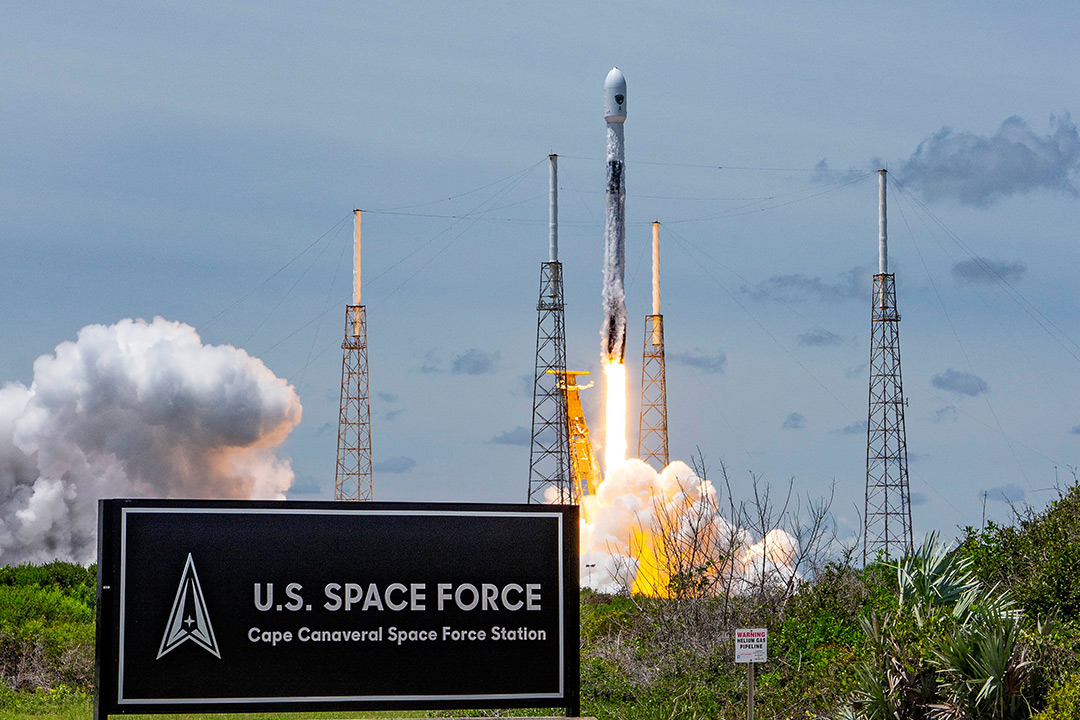RIT selected to receive $9.9 million for U.S. Space Force research
The research center will focus on advancing space power and propulsion
Airman 1st Class Samuel Becker/U.S. Space Force
A Falcon 9 rocket carrying a GPS III-5 satellite into orbit launches from LC-40 at Cape Canaveral Space Force Station, Fla. RIT will use funding from the U.S. Space Force to make advancements in space exploration.
RIT has been selected to lead the United States Space Force University Consortium/Space Strategic Technology Institute 3 (SSTI) research regarding advanced space power and propulsion, which includes $9.9 million in funding.
The research is in partnership with the Air Force Research Laboratory and will enable game-changing space power and propulsion technology that will transition to the U.S. Department of Defense. The University of Michigan is also a lead institution for this research, which will include advancements in solar technology, thruster technology, and novel power approaches.
As a center leader for the SSTI, RIT will work with other university partners to develop lower-cost, sustainable solar cells that can be used for power systems.
“We’re trying to look at innovative new materials,” said Seth Hubbard, professor in the School of Physics and Astronomy and director of the SSTI research center. “It’s very important to find materials that are scalable, manufacturable, but can also withstand the extreme environments in space.”
Specifically, the team will be building off work by Ahmad Kirmani, assistant professor in the School of Chemistry and Materials Science, with perovskites and their use in space.
“We have found some really surprising and astonishing properties,” said Kirmani. “Perovskites appear to hold up at energy levels and intensity levels far higher than silicon, and silicon has been used for powering space satellites. We have been recreating space stressors like radiation, vacuums, and atomic oxygen to see how perovskites perform.”
The commercialization of space has increased the demand for cheaper materials that can withstand harsher environments for longer periods of time. Advancing space technologies has become a large focus of funding for both private and governmental and military purposes. RIT continues to build its reputation as a leader in space technology.
“We’re recognized as a university that can handle this type work, knows what they’re doing, and is at the forefront of this technology and research,” added Hubbard. “To be selected for this opportunity to contribute to the cutting edge of space power research is very exciting.”
TEDxRIT talk by Ahmad Kirmani
RIT’s Ahmad Kirmani gives a TEDxRIT talk on how perovskites semiconductors are the future of space.










